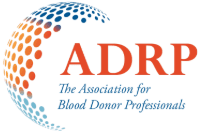Sexual risk behavior questions: Understanding and mitigating donor discomfort
Authors
Jennie Haw, Hyunjin Woo, Taylor Kohut, William Fisher
Abstract
Background
Blood operators are working to improve donor screening and eligibility for gay, bisexual and other men who have sex with men (gbMSM), and trans and nonbinary donors. Many consider screening all donors for specific sexual risk behaviors to be a more equitable approach that maintains the safety of the blood supply. Feasibility considerations with this change include ensuring donor understanding of additional sexual behavior questions and minimizing donor loss due to discomfort.
Study design and methods
Qualitative one-on-one interviews were conducted with Canadian whole blood and plasma donors (N = 40). A thematic analysis was conducted to assess participants’ understandings of the questions, examine their comfort/discomfort, and identify strategies to mitigate donor discomfort.
Results
All participants understood what the sexual behavior questions were asking and thought the questions were appropriate. Themes related to comfort/discomfort include: their expectations of donor screening, social norms that they bring to donation, whether their answer felt like personal disclosure, knowing the reasons for the question, trusting confidentiality, confidence in knowing their sexual partner’s behavior, and potential for the question to be discriminatory. Strategies to mitigate discomfort include: providing an explanation for the questions, forewarning donors of these questions, reducing ambiguity, and using a self-administered questionnaire.
Conclusion
While many blood operators and regulators view the move to sexual behavior–based screening for all donors as a significant paradigmatic shift, donors may not perceive additional sexual behavior questions as a significant change to their donation experience. Further research is needed to evaluate the effectiveness of strategies to mitigate donor discomfort.
November 22, 2021
Related Resources
Engaging blood donors as advocates Social media preferences and associations with marketing
Background: Various critical medical procedures would become impossible without blood donations—saving lives in emergencies, surgeries, and chronic conditions like thalassemia. Therefore, it seems crucial to enhance donor recruitment and ensure…
Rethinking the role of older donors in a sustainable blood supply
INTRODUCTION Many countries, particularly high human development index countries, are facing the challenge of an aging population.1 For Blood Collection Agencies (BCAs) in these countries, an aging population poses two…


